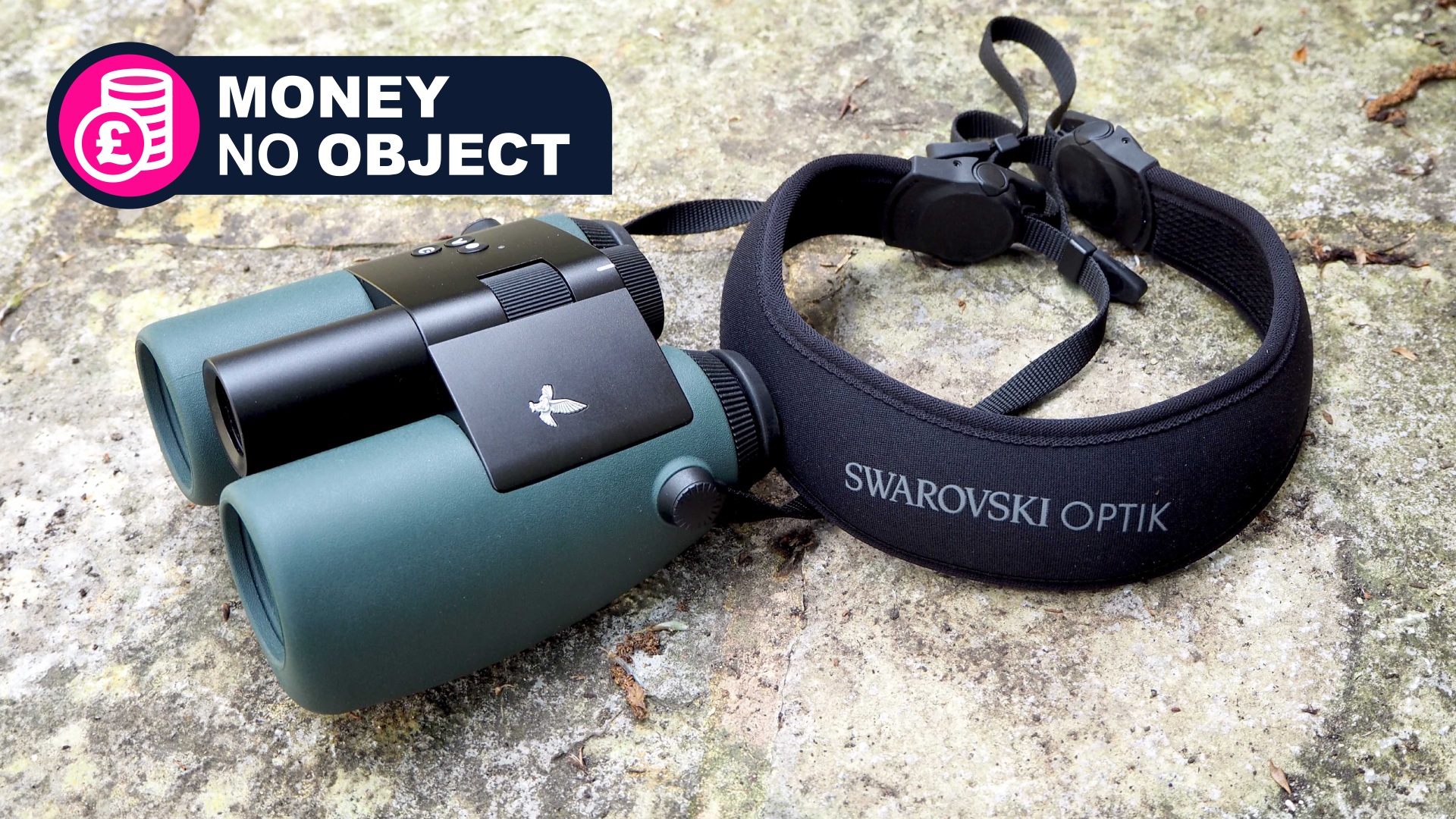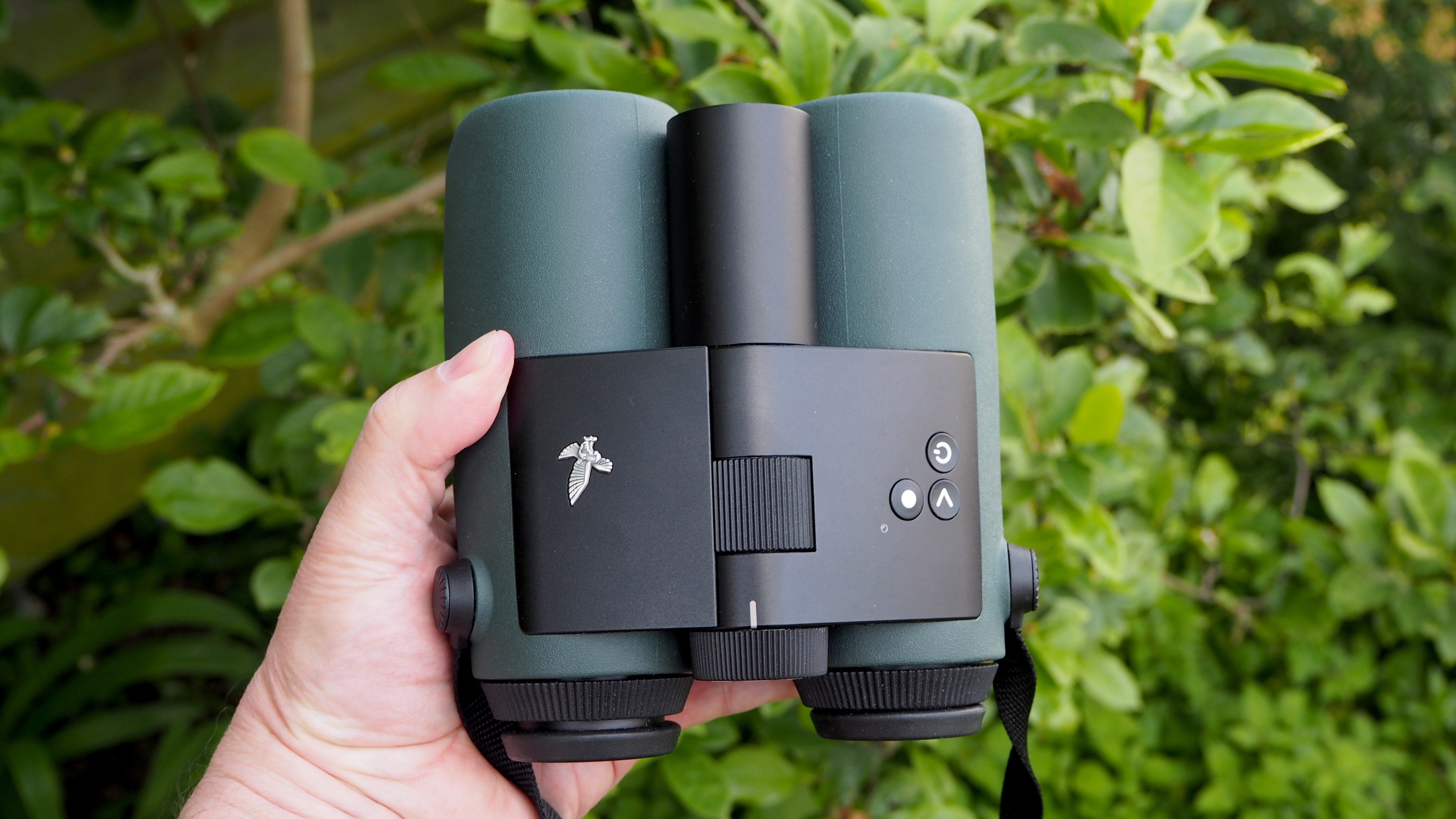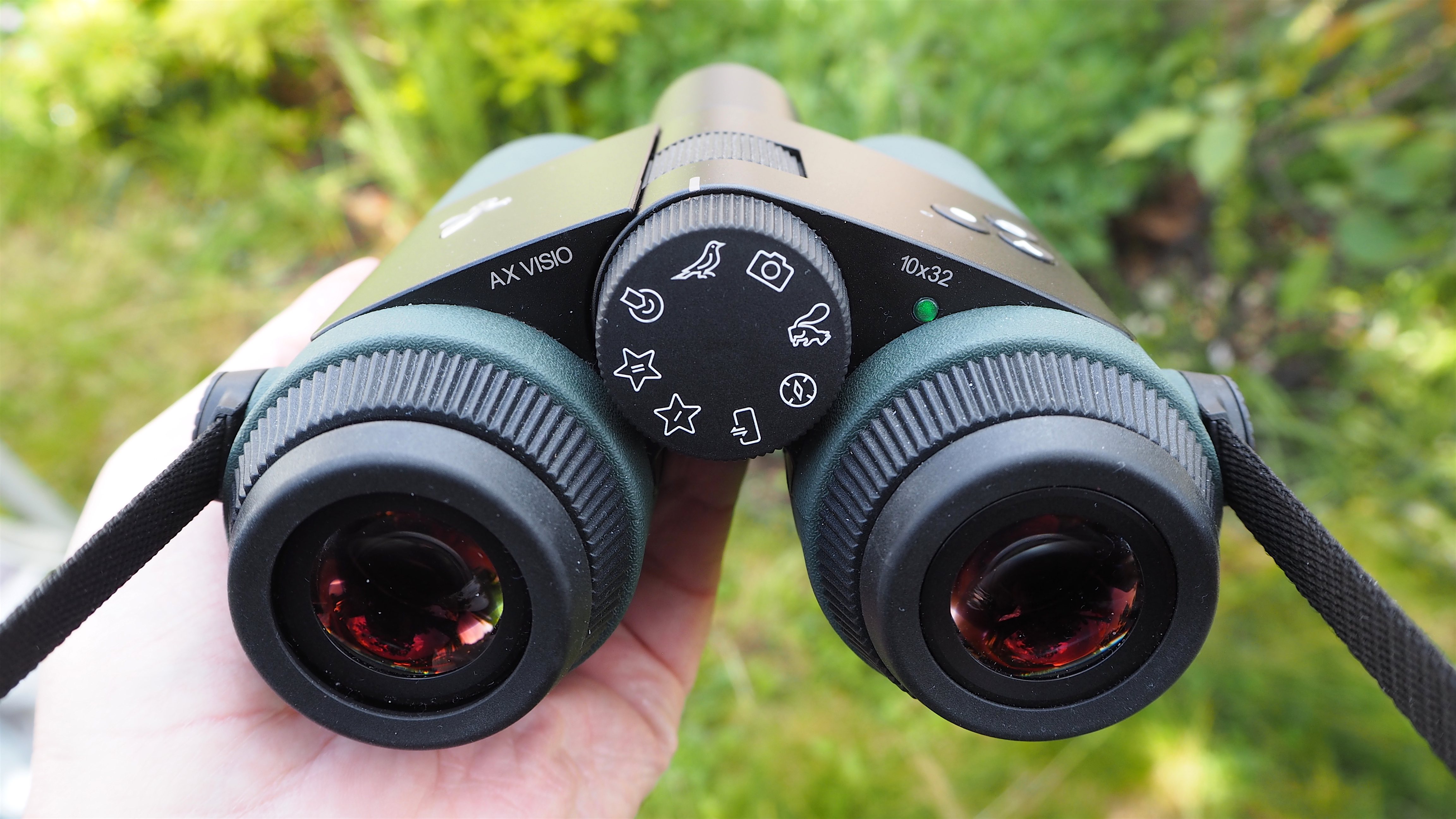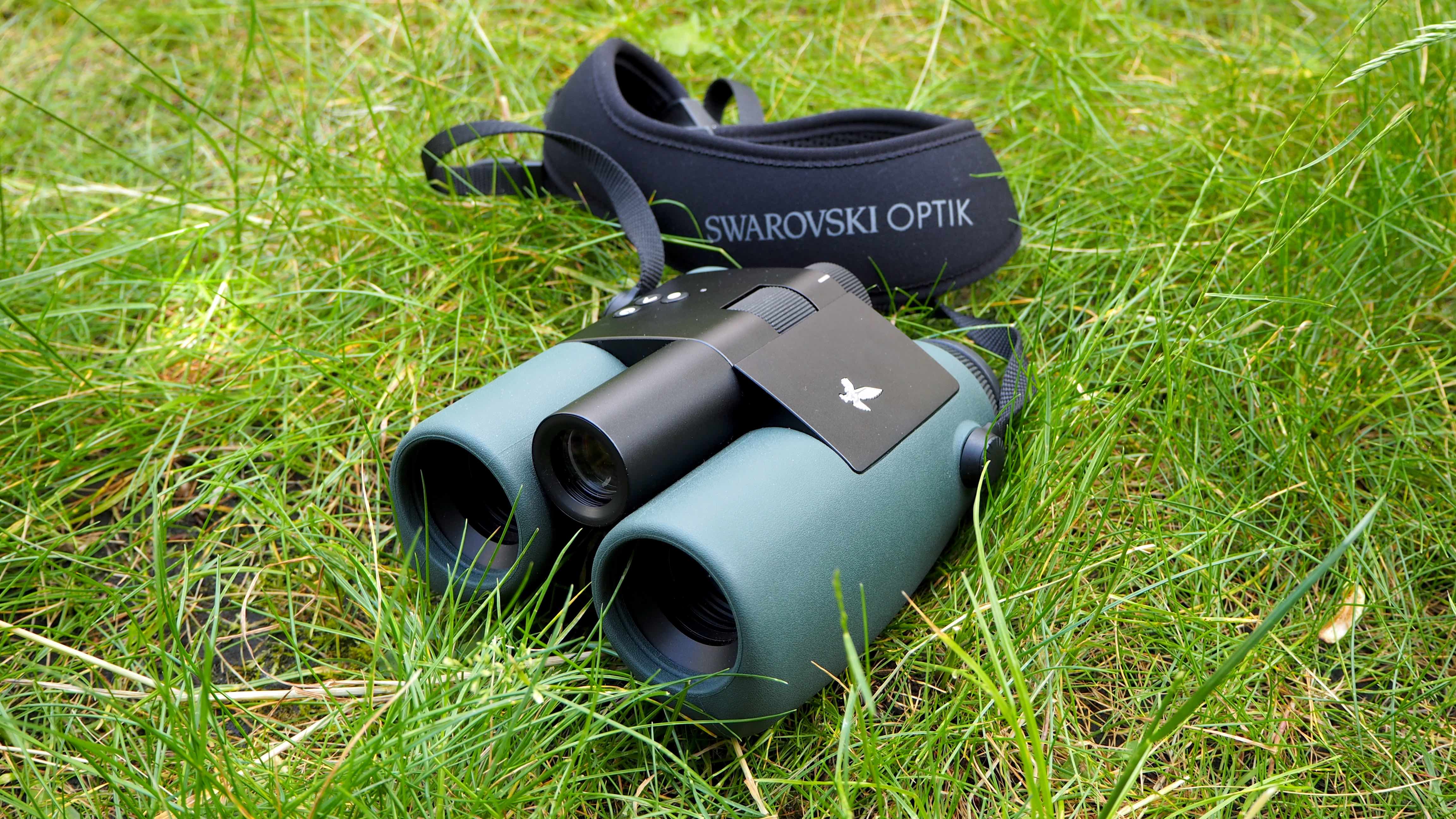These luxury smart binoculars from Swarovski Optik use AI to identify up to 9,000 birds and other wildlife, and I’m hooked
AI-enhanced binos for the birds

Being fortunate to have a common and duck pond at the end of our road, plus a national park within walkable distance, migrating birds and all manner of wildlife are almost a stone’s throw away at all times. Yes, I know what an urban fox and a wood pigeon look like and could identify them even in the dark, but ask me about the less common wildfowl splashing about in front of me and I’ll often draw a blank.
As it’s spring at the time of writing, inevitably some of the waterfowl have had young, leading to a very aggressive male swan shooing away fellow pond dwellers, dogs and humans while his mate perches atop her nest.
Given this, maintaining a distance is wise and therefore a binocular is the best bet for observing what’s going on beyond the rushes… but not just any binocular.

Earlier this year Swarovski Optik announced what it claims are the world’s first AI-supported ‘smart’ binoculars. Well aware that Swarovski is a premium, Austrian-made brand renowned for its optical excellence, I had no doubt the view offered by its AX Visio 10x32 costing several thousand £’s/$’s would be razor sharp.
But the full reason we’ll be paying even more of a premium this time around is the digital extras under its bonnet. Uniquely, these not only allow us to see wildlife sufficiently up close and personal to pick up on feather detail but also identify what we’re looking at, via the combination of a button press to activate the feature and a digital overlay displayed within the eyepiece.
The claim is that it can identify up to 9,000 birds and other wildlife – a claim I was not able to test to the nth degree during my review period in terms of the volume of creatures spotted, but I did see enough to be pleasantly impressed, as I’ll come to in a minute.

Education can be fun
Once the supplied rechargeable battery has been juiced up via the supplied mains charger and inserted, handling these extremely high-quality AX Visio 10x32 binos proves an adage I once thought impossible to prove – that education can indeed, sometimes, be fun.
Sign up for breaking news, reviews, opinion, top tech deals, and more.
Because it’s not just your standard binocular, however, I also discovered it does require a period of familiarisation and a bit of trial and error to get the best from its features and streamline operation.
Naturally to get the identification software up and working you first have to turn the binos on, a process that requires a wait of a few seconds while it boots up and a green indicator light located just above the right eyepiece flashes. Once it had stopped flashing and displayed a solid green, I was ready to go.
Wildfowl and wildlife are identified with the eyepiece of the binocular itself – given the restricted space it doesn’t go into great detail, just gives the name of the creature and that’s it. If you want to go further, you can pair the device with a smartphone after first downloading and installing the dedicated Swarovski Optik Outdoor App.
As long as the binos are powered up when pairing them I found this to be a relatively smooth process. Plus, since the binos don’t feature a built-in LCD screen, you can use your phone as a remote to access further features. Swarovski says it will provide future updates via this app, which it promises should lead to a product life cycle lasting ‘many years’.
Though not obvious to me at first, the tube that rests atop the eyepieces and has a mode dial located at its rear used to toggle between identification settings is a built-in camera. If using the app, you can export photos and video clips from the binocular to your phone for sharing.
There’s no separate slot for a memory card on the Swarovski AX Visio 10x32 and the battery compartment is protected by a screw-and-lever lock – in both cases so the device can maintain a degree of weatherproofing. While I didn’t attempt to dunk it in the pond, I was able to continue my observations in light drizzle without worry, and to no ill effect.

Accept no substitute
In use it quickly became clear that the Swarovski AX Visio 10x32 binoculars are chunky as well as weighty, requiring both my hands to grip and steady. Officially the weight is just over 1 kg without its rechargeable battery inserted. This meant the comfortable and well-padded shoulder/ neck strap provided out of the box was appreciated.
We’re told the 1960s space-age look of the device is down to industrial designer Marc Newson, and the egg-shaped rubber rims that protect the front glass give it a slightly anthropomorphic feel. The rubber surface covering most of the device aids grip and ensured that at no point I felt they were going to fly out of my grasp if I panned too quickly. Incidentally, there’s no screw thread at the base to alternatively attach a tripod for added stability, so these are very much built for handheld use. The large ridged focus wheel fell readily under my forefinger as my thumbs encircled the base of the eyepiece.
Unsurprisingly, the Swarovski AX Visio 10x32 binoculars are stunning when used like a regular analog observation tool and blow most alternatives out of the pond water in terms of razor-sharp visibility. The first time I put them to my eyes I was dazzled by the intensity of the view, particularly when used in the middle of the day with plenty of light available. But activate the software-enabled bird and animal identifying features and usage is bumped up to a whole new level.
Okay, so while you’re theoretically able to identify up to 9,000 creatures, I’d say the hit rate during the time I was using them was broadly 90%. In one instance a pond turtle was identified as, at first, a fallow deer and, at the second attempt when I re-focused, a water beaver, which wasn’t spot on but getting closer.
In fairness, I don’t know if it’s been set up for amphibians, and there was no trouble identifying a squirrel or the myriad types of birds I pointed the binos at, including Mandarin Ducks and Egyptian Geese. I simply had to turn the mode dial to the bird icon for Merlin Bird ID support when the binoculars were active. Impressively I found I could correctly identify such critters even when looking at them from the back – I didn’t always have to have the animal front or side on, even if centering the whole body within the digital frame the eyepiece provides worked best.

So, who’s it for?
If I was being obstreperous I’d acknowledge that, yes, we could debate whom exactly the Swarovski AX Visio 10x32 is for, given it’s reasonable to assume that avid bird watchers prepared to part with such a large bag of cash will be well clued up about what they’re looking at anyway.
And should you have your own pocket book of birds and feel sufficiently confident in identifying most species for yourself, then I recommend checking out the ‘regular’ non-AI-enabled 10x32 NL Pure binocular, also from Swarovski, which offers the same core spec of a 10x magnification and 32mm objective lens as here.
Ultimately it’s curious amateurs that the Swarovski AX Visio 10x32 would most benefit, even if they do balk at the eye-watering price tag. Once the tears subside, however, they’ll be similarly hooked.
In conclusion, as a freelance writer, the Swarovski AX Visio 10x32 binoculars are way above my pay grade. But now I’ve experienced their razor-sharp views and AI-enabled Smart Alec-style identification capabilities, when it comes to observation from afar, I fear I’ve now been so spoilt I’ll find it hard to settle for anything less.
You might also like...

When not wrestling wild bears or leaping tall buildings in a single bound, Gavin Stoker can be found editing British Photographic Industry News, the UK's longest running and only photo trade title. He has over 25 years of camera testing and reviewing under his belt.